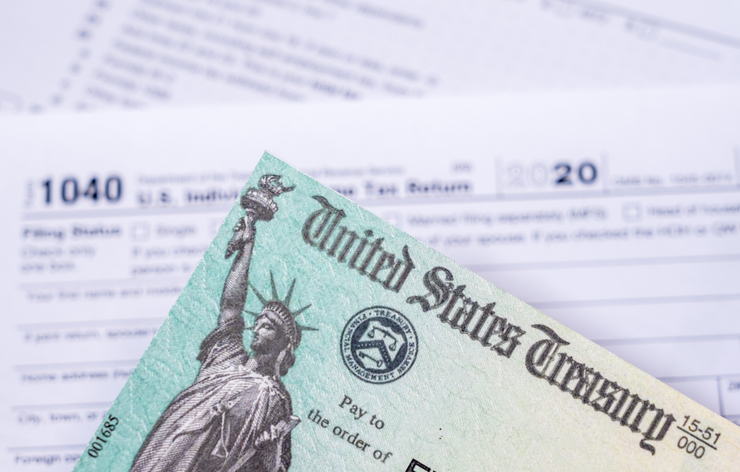Both certificates of deposit and Treasury bills are considered safe, short-term savings vehicles. However, the two differ in yield, liquidity, taxation and flexibility. While CDs may offer higher yields from banks or credit unions, T-bills come with the backing of the U.S. government. If you are interested in adding CDs and Treasury bills to your portfolio, a financial advisor can help you compare returns, plan for taxes and incorporate either investment into your overall plan.
What Are Certificates of Deposit?
Certificates of deposit (CDs) are accounts available at banks or credit unions. You deposit a fixed amount of money for a specific period or term, typically ranging from a few months to five years or longer. In return, the bank pays a fixed interest rate. The interest compounds during the term, so your balance grows steadily. At the end of the term, you receive your original deposit back along with the interest that you earned.
The main limitation with CDs is that your money is tied up until the term ends. If you withdraw early, you will likely pay a penalty that reduces or even cancels out your interest earnings. Because of this, CDs are often used for money you don’t need to spend soon. They can provide predictable returns and keep your principal safe, but they don’t offer the same flexibility as accounts that allow you to access your funds at any time.
The table below compare several types of CDs, including traditional, no-penalty, jumbo and callable CDs.
| Type of CD | Description |
|---|---|
| Traditional CDs | Fixed term with a fixed interest rate. |
| No-penalty CDs | Allow early withdrawal without penalties. |
| Jumbo CDs | Require large minimum deposits, often $100,000 or more. |
| Callable CDs | Bank can redeem early if interest rates fall. |
CDs are insured by the FDIC (for banks) or the NCUA (for credit unions), which protects deposits up to $250,000 per depositor, per institution. This insurance means that even if the bank or credit union fails, your principal is covered within those limits, making CDs one of the safer options for preserving your money.
What Are Treasury Bills?
Treasury bills (T-bills) are short-term debt obligations from the U.S. Department of the Treasury. They mature in one year or less and are sold at a discount to face value. You receive the full face value at maturity, with the difference representing your interest.
For example, you could buy a 26-week T- bill for $9,800 and receive $10,000 at maturity. Because T-bills are backed by the U.S. government, they are generally considered very low risk when compared with other investments.
You can buy T-bills directly through TreasuryDirect or from a brokerage account. They can also be traded on the secondary market, which makes them highly liquid. T-bills are issued with terms of four, six, eight, 13, 17, 26 or 52 weeks.
You should also note that T-bill interest is taxable at the federal level but not subject to state or local income taxes, which can make them more attractive for investors in higher-tax states.
CDs vs. Treasury Bills: Key Differences
Both CDs vs. T-bills differ in several key ways that can affect your portfolio strategy. Here are five to consider before your buy:
- Backing and safety. CDs carry insurance up to the FDIC limits, while T-bills are backed directly by the U.S. government. Both are extremely safe, but many consider T-bills the gold standard of safe investing.
- Liquidity and access. With a CD, you usually face a penalty for accessing funds before the term ends. However, T-bills give you the option to sell on secondary markets if you need access to your money before maturity.
- Yield potential. CDs, especially long-term ones, tend to offer higher interest rates than T-bills. However, the yield advantage may diminish if you face early withdrawal penalties.
- Tax treatment. Interest from CDs is subject to federal, state and local taxes. T-bills are exempt from state and local income taxes, which can be a significant advantage for residents of high-tax states.
- Purchase method. You can purchase CDs directly from banks or credit unions, while T-bills are available through TreasuryDirect or brokers.
Pros and Cons of CDs

CDs can be a reliable, predictable way to earn interest if you do not need immediate access to your money. But here on some benefits and drawbacks you should consider to get a fuller understanding of how they could affect your portfolio.
Pros
- Higher yields. CDs often offer better interest rates than T-bills, especially in competitive rate environments.
- FDIC-insured. Your money is protected up to the federal insurance limits, adding peace of mind.
- Fixed interest. The rate is locked in, which can be helpful during interest rate cuts.
- No market risk. Your return is guaranteed if you hold to maturity.
Cons
- Early withdrawal penalties. If you need access to your funds early, you may forfeit interest or even principal.
- Limited liquidity. CDs are not easily tradable like T-bills.
- Reinvestment risk. At maturity, you may have to reinvest at lower rates if the rate environment changes.
Pros and Cons of Treasury Bills
Investors who prioritize low risk and tax efficiency often choose T-bills. They are popular for short-term savings goals or cash management. Here is a comparison of pros and cons to help you decide.
Pros
- Government-backed. There is virtually no default risk with T-bills.
- Tax advantages. Interest is exempt from state and local taxes.
- High liquidity. You can easily sell them in secondary markets before maturity.
- Short maturities. They allow flexibility in reinvestment or reallocating funds.
Cons
- Lower yields. T-bills typically yield less than CDs, especially in stable or falling rate environments.
- Federal taxation. Interest is still subject to federal taxes.
- Purchase complexity. Buying through TreasuryDirect or brokers may be less convenient than a bank CD.
- Price fluctuations. If sold before maturity, the sale price could be lower than expected due to interest rate changes.
When to Choose a CD vs. Treasury Bill
Your decision may hinge on your specific goals, tax situation and need for flexibility.
You may prefer CDs if:
- You want a guaranteed return and do not anticipate needing the funds early.
- You are investing through a bank or credit union with competitive CD rates.
- You prefer the simplicity of FDIC insurance and easy setup.
You may lean toward T-bills if:
- You live in a high-tax state and want to avoid state and local tax on interest.
- You may need to sell before maturity.
- You want to build a short-term bond ladder or keep funds accessible.
Some investors even use both, building a ladder of CDs and T-bills with staggered maturities to maximize returns while maintaining liquidity.
How to Incorporate Them Into Your Portfolio
CDs and Treasury bills both play a role in managing cash and preserving capital within a portfolio.
You might use them to:
- Hold emergency savings with less risk than stocks or mutual funds.
- Park cash before making larger investments.
- Generate stable income with minimal downside.
A laddered strategy, where you invest in multiple CDs or T-bills with different maturity dates, can help manage reinvestment risk and provide regular liquidity.
You should also be aware of how these fit alongside money market funds and high-yield savings accounts. While those offer more flexibility, CDs and T-bills often provide higher yields, particularly during periods of rising interest rates.
Bottom Line

When comparing CDs and Treasury bills, both are low-risk choices for preserving cash. CDs often provide higher yields and FDIC insurance but charge penalties for early withdrawals. Treasury bills are backed by the U.S. government and offer state tax advantages, though yields may be lower. Your preferance will depend on your goals, time horizon and need for flexibility. Some investors use both as part of a balanced fixed-income strategy.
Investment Tips for Retirement
- A financial advisor can help you select investment and manage risk for your retirement portfolio. Finding a financial advisor doesn’t have to be hard. SmartAsset’s free tool matches you with vetted financial advisors who serve your area, and you can have a free introductory call with your advisor matches to decide which one you feel is right for you. If you’re ready to find an advisor who can help you achieve your financial goals, get started now.
- If you want to diversify your portfolio, here’s a roundup of 13 investments to consider.
Photo credit: ©iStock.com/BackyardProduction, ©iStock.com/Andrii Dodonov, ©iStock.com/fizkes
